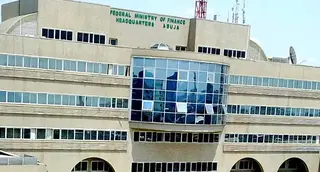Several companies and individual contractors and consultants working for the government are still being paid billions despite their refusal to honour their obligations to pay their debts, findings from a special debt recovery Initiative by the government has revealed.
The initiative called Project Lighthouse Programme managed by the Federal Ministry of Finance showed that about N57bn has so far been recovered out of a total debt portfolio of N5.2trn in 10 Ministries, Departments and Agencies (MDAs).
The Director Special Projects Federal Ministry of Finance, Aisha Omar, who disclosed this in Gombe, Gombe State during a one-day sensitisation programme for the North-East Geopolitical Zone said the debt recovery followed the deployment of the Debt Analytics and Reporting Application in computing the total debts of all government MDAs.
Omar said these debts came from the ongoing review and analysis of data from over 5,000+ debtors across the 10 MDAs. The names of the MDAs were not disclosed.
“Project Lighthouse initiative was designed to help solve the intractable and perennial problem of debt recovery by using big data analytics technology,” Omar explained.
The Director who was represented at the event by the Deputy Director in the Special Projects Department in the Ministry, Bridget Molokwu, disclosed that the core focus of Project Lighthouse was to leverage on big data technology to help block revenue loopholes, identify new revenue opportunities, optimise existing revenue streams, especially non-oil revenue as well as improve fiscal transparency.
The essence of the initiative, she pointed out, was the recovery of debt owed to the Federal Government by individuals and companies through the debt recovery capability of Project Lighthouse engine.
The system, she said, collects, integrates and analyses data from revenue generating agencies to create insightful information for improved decision making on debt recovery.
The Director said many of the companies and individuals indebted to government agencies and refused to honour their obligations were still being paid, especially through the government platforms such as GIFMIS and Treasury Single Account (TSA) due to lack of visibility over such transactions.
The Director explained that the debts were in the form of debt liabilities to the Federal Inland Revenue Service (FIRS), refunds to the government by companies which failed to deliver on projects for which payment had been effected, unpaid credit facilities granted to both corporate entities and individuals by the Bank of Industry (BOI) and Bank of Agriculture (BOA).
Others were judgment debts in favour of the government, debts owed Pension Transition Arrangement Directorate (PTAD) by insurance companies, among others.
She explained that the Ministry had taken steps to address the major revenue loopholes, some of which included the issuance of a Ministerial directive since September 26, 2019 to all MDAs with a view to aggregating all government debts across the Public Finance Space into a single window on the credit profile of the Federal Government for regulatory approval by the Federal Executive Council (FEC) on March 31, 2021.
These measures, she said, would enable the Federal Ministry of Finance to fully automate the debt recovery process and make settlements of debts as seamless as possible.
While soliciting the cooperation and commitment of participants to the process by providing quality and relevant information (debt-related data) to populate the platform, the Director reiterated that their organisations stood to benefit immensely from the intelligence the initiative would produce, adding that their continuous support would ensure the full realisation of the goals and aspiration of the project.
“We believe that together we can dramatically change our revenue story by fully and innovatively exploiting the great power of Big Data Analytics, Data Science and related technologies,” Omar said.
She also urged all stakeholders to put in their best to ensure the successful implementation of this initiative, adding that the essence of the workshop was to train officers on how to go about their debt recovery duties effectively as an important aspect of the government recovery process.
The debt recovery exercise, she pointed out, would help reduce the country’s indebtedness, tract day-to-day revenue generation, get the true profile of the government’s debt recovery porfolio, and block revenue leakages and loopholes.
Earlier the Project consultant,.Abraham Atteh, stated that the initiative was all about debt recovery through the use of technology, adding that it was all about tracking, retrieving and recovering government debts.
Atteh explained that with the initiative, every entity that does business with the government would be able to pay debts owed to the government, while the systems would be put in place to block loopholes created by these entities.
The government, he said, was putting every technology in place to recover its debts owed by both private and corporate entities, adding that those categories of debtors would be tracked using existing technology.
One of the participants, Usim Ahmed, described the initiative as a good one, although he urged the government to involve technology so that all debts could be traced and recovered back to government coffers, while payment platforms should be made effective with full technology to recover those debts.
Another participant, Idris Nasiru Baba said the policy was great, but its implementation might be difficult since government contractors might owe one Ministry and go to the other to do business.



